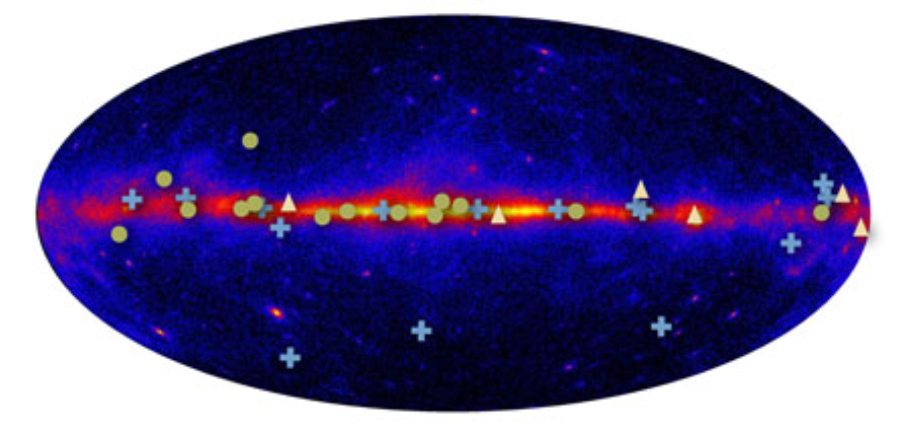
 Credit: Peter Michelson; Fermi Consortium
Credit: Peter Michelson; Fermi Consortium
Old; New
Dead stars are hard to find. Some are cold and nearly absolutely silent; some can be detected but only if they are oriented in a certain way towards earth. All are incredibly tiny. The Fermi Gamma-ray Space Telescope is proving to be a sensitive dead-star finding machine. Since starting science operations in August 2008, Fermi's Large Area Space Telescope (the LAT) has been scanning the sky looking for high energy gamma-ray emission from rapidly spinning neutron stars. The LAT has exceptionally low background, great sensitivity and high time resolution, enabling sensitive searches for pulsing gamma-ray emissions produced by rotating neutron stars. The LAT has discovered 15 new gamma-ray pulsars, and detected numerous others. The image above shows the Gamma-ray sky seen by the LAT, with positions of LAT-observed pulsars shown. The circles represent the new pulsars identified by the LAT. Most of the high-energy emitting pulsars seen by Fermi lie along the Galactic plane, the bright band stretching from left to right in the middle of the image. This indicates that these highly energetic pulsars are associated with the deaths of young massive stars within the spiral arms of our Milky Way.
Published: December 29, 2008
<
HEA Dictionary ● Archive
● Search HEAPOW
● Other Languages
● HEAPOW on Facebook
● Download all Images
● Education ● HEAD
>
Each week the HEASARC
brings you new, exciting and beautiful images from X-ray and Gamma ray
astronomy. Check back each week and be sure to check out the HEAPOW archive!
Page Author: Dr. Michael F. Corcoran
Last modified Monday, 26-Feb-2024 17:23:22 EST


